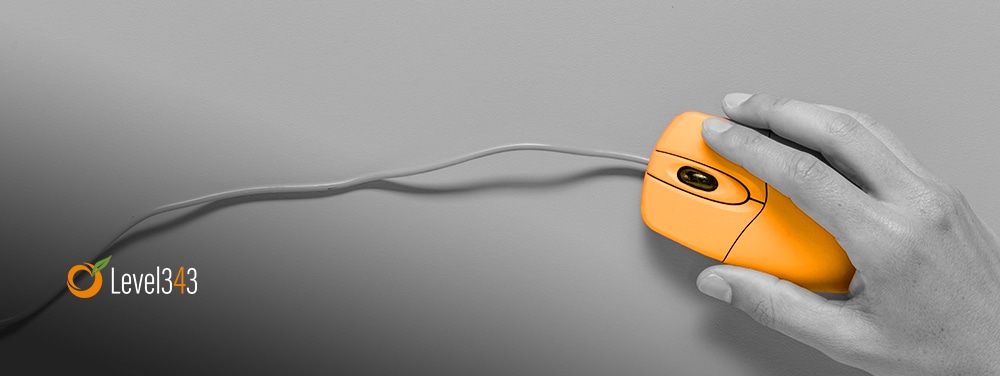Bet we made you look. I’d even go so far as to bet that you’re a marketer and you thought we were talking about you. Or maybe, you’re a business owner and you thought we were giving away trade secrets. That’s the power of clickbait.
At it’s most basic, clickbait is a piece of hyperlinked text that takes the reader to another bit of content, such as an email, blog post, or article. The purpose is to stand out from competing content, get eyes on pages, and to get those readers to share the content with others.
It can be maddening when there’s no payoff, but it’s very effective when used judiciously.
Why is Clickbait so Effective?
Clickbait works by capitalizing on our need to know or appealing to – then neutralizing – our fear of missing out (FOMO). But, the power of clickbait goes deeper than that. There’s an actual science behind why it’s so effective.
The science behind our vulnerability to clickbait harkens back to an inborn survival instinct that drives us to learn more about our immediate environment and the wider world. Although most of us no longer need to collect and process information in order to survive, that need to know is still part of our hardwired, conditioned behavior.
When we read a headline that teases answers to sensational, unbelievable, or critical information, we click. If our curiosity is piqued, another factor kicks in: our dopamine receptors are activated. The actual process is complex, but the explanation is really simple.
Dopamine is the feel-good chemical that resides in the pleasure center of our brains. Although we think of dopamine as a chemical that’s released when we’re satisfied, it’s really activated through anticipation.
So, clickbait addresses two biological/psychological functions, our need to know and the curiosity unleashed by that need. The payoff is the satisfaction obtained when those two imperatives are fulfilled through cleverly constructed clickbait and content that delivers on the headline’s promise.
Although not every piece of content includes each of these attributes, all clickbait includes at least some of these components:
- Contains wording the evokes a strong emotion
- Poses a question and/or promises a solution
- Inspires social shares and engagement
- Uses humor
- Grabs your attention
- Supports short-form or scannable content
- Accompanies video or images
How to Ethically Incorporate Clickbait Into Your Content Headlines
How many times have you clicked on an article headline only to scroll through pages of content before your curiosity was satisfied? Worse yet is to click through and not receive any payoff at all. (Read about five other common headline mistakes you want to avoid)
Clickbait has been around for about as long as print adverting and news themselves. You see an enticing headline, and you need to know the story behind it. It’s human nature. However, it’s also frustrating to your readers if it’s used unethically.
Clickbait has earned a negative connotation because so many publications abuse it in the name of better metrics and SEO. Some publications are notorious for using clickbait-y, sensationalistic headlines that leave readers feeling like they’ve been had.
We’ve all read National Enquirer-level headers that come off like a bad soap opera synopsis:
“You’ll Never Believe What Your Neighbors are Really Doing Every Night”
“These 10 Ordinary Household Items Will Kill You”
“Why You Should Never Wear Plaid”
When incorporated for its own sake, clickbait diminishes trust and ruins your credibility. Used correctly, it increases brand awareness, improves social engagement, and contributes to solid, sustainable SEO. Used improperly or with the purpose of misleading/misinforming the reader, clickbait is dishonest.
In fact, Google will punish you for ads or other content that uses intentionally misleading headlines that:
- Promise to reveal secrets or sensationalistic information
- Uses manipulative language, such as “Click if you want to learn more
- Uses altered or misleading images
- Uses death, destruction, or some tragedy in a way that’s designed to manipulate an emotional response
The trick is to learn to write compelling headlines that get people to click without leaving them feeling used.
Here’s how it’s done.
Incorporate Emotionally Appealing Language
Clickable headlines are those that trigger or appeal to our emotions. Make the reader feel something strongly enough to click on your article and read further. However, don’t just go for the cheap, easy reaction unless the topic calls for shock, outrage, or other typically hyperbolic language.
Use Numbers in Your Headline
Listicles are popular for several reasons. First of all, they provide an end point to the content. You know that “X ways to…” is going to end when you’ve reached the bottom of the predetermined list of points or objectives. It also makes the content scannable due to how lists are formatted. Content that’s presented in list form is more digestible and helpful as well. Who doesn’t want to know 10 ways to do something better, faster, or whatever the payoff may be?
Deliver With Supportive Content
If you’re going to lure your readers in, make sure that the content that follows is equally alluring. Whatever you promise in the headline, deliver with your content. Just make sure that you do so within a reasonable amount of content. Few things are more frustrating than scrolling through pages of filler before the writer gets to the point.
Final Thoughts
In content creation, you only have about 5 seconds to grab someone’s attention. Whether you’re composing an email or writing a piece of content for your website, your headline is like a calling card that invites the reader to step inside. By utilizing the power of clickbait to generate interest and foster engagement, you’ll improve every metric and consistently create compelling content.
Need some help with your content creation? The team at Level343 has a proven track record of getting measurable results. Get in touch with us to arrange a consultation about your content and marketing strategy today.



































